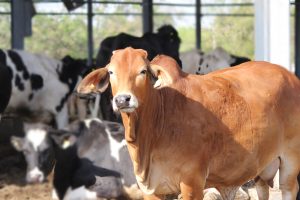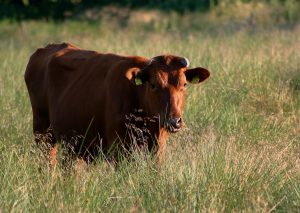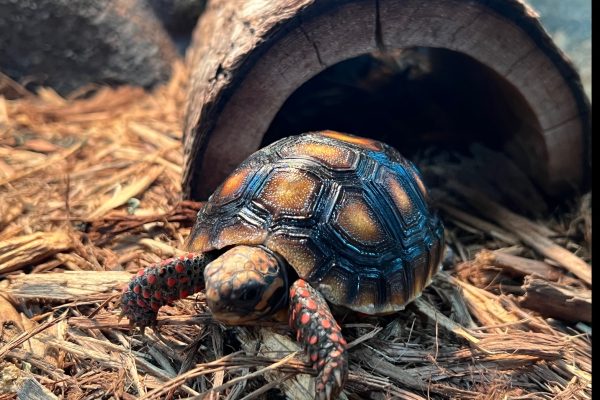There are several breeds of cattle that have been recognized from all around the world. The official number of cow breeds is well over a thousand and is continuously expanding. Some kinds of cows have been adapted to the surrounding climate about a particular region. On the contrary, other cows have been specially bred by humans for fulfilling a specific purpose. Cows have been raised all over the world for the many benefits in terms of milk, meat, and more. Find out all about the breeds of cows to understand this better.
Not only are cows one of the best animals that produce sustaining material for human beings, but they have also been welcomed in almost all cultures around the world. Cow milk is the most popular variety of milk available in the market, and the various dairy products that come along with it is an essential part of the human diet. Not only so, but cattle are also used for eating purposes, with beef being one of the most widely-eaten meats that are consumed around the world. Hence cow breeding has always been an exciting concept that has benefited humans for ages.
Differences among breeds of cows
There are mainly two different distinctions when it comes to the different breeds of cattle. These two types may be considered as two very close species or belonging to similar subspecies of a particular species. Bos indicus or what is also called Bos taurus indicus, commonly called zebu have been adapted to the hot parts of the world as they had originated in the tropical belt of the world. These cow breeds in India are also common in places like China, sub-Saharan Africa and other Asian regions.
Bos taurus or what is also called, Bos taurus taurus, or the taurine cattle, is more adapted to the cooler parts of the world. This category includes all the different breeds of cows that have originated in Europe, northeast Asia, and the Mediterranean region in the world. Different varieties of cows have existed since ancient times all over the Mediterranean and in the northeastern Asian areas. They have since then cross-bred or have been artificially hybridized into the different breeds.
Indigenous Dairy Breed
The following includes various cattle breeds that are primary sources of dairy products:
Red Sindhi
This breed of cattle is also known as the Red Karachi and is found mainly in Hyderabad and Karachi. The endless amount of milk yielded by this breed of cow is around 1100-2600 kgs. This cover is predominantly white with dark to bright red patches and stripes. They are also used heavily for cross-breeding exercises.
Gir
This breed of cow is alternatively also known as Surati, Sorthi, Gujrati, Desun, and more. This breed of cow has initially been from the Gir forests located in South Kathiawad of Gujarat. It is white with various patches of deep red or brown color. The horns of these cows are distinctive and curved to form a half-moon shape. It yields around 1200-1800 kgs of milk.

Deoni
This breed of cow is also known as Dongarra, Dongerpati, Balankya, Wannera, and many more names. It originally belongs to the Marathwada region in the state of Maharashtra. The typical color of this breed is spotted with black and white. It provides around 636 to 1230 kgs of milk.
Sahiwal
This is a breed of cow that is originally from the Montgomery district of present Pakistan. It is also known by other names such as Lola, Multani, Bar, Lambi, and much more. This cow is typically a little redder in color with a reddish dun or even a pale red hue. They can also come with splashes of red here and there—it yields about 2,725 and 3,175 kgs of milk with a lactation period of around 300 days.
Indigenous Draught Breed
Cows are one of the most versatile domesticated animals around the world. While they are beneficial for providing dairy, they have also been used for several other purposes throughout the years. Cows are also bred for their draught capacities.
Some of the most important Indigenous Breeds used for draught are as follow:
Amritmahal
This breed of cow is originally from Chitradurga and Chukamgalur district in the state of Karnataka. While they are primarily grey, they can also be found in white and black varieties. They have long and pointy horns that end in a dark black color.
Hallikar
These cows were first discovered in the princely state of Vijayanagarm that is now located in Karnataka. These cows are primarily grey. Not only are they compact and well built, but they are also extraordinarily muscular and medium in size. This breed has been prevalent for their trotting capacity as well as their draught ability.
Kangayam
The origin state of this cow has been noted across various regions that include Kangayam, Perunduray, Bhavani, Erode, Dharapuram, as well as in the Gobichettipalayam taluk of Coimbatore and Erode. This breed of cow was developed by the hybridization efforts of Sri N. Nallathambi Sarkari Manradiar and late Pattogar of Palayakottai. The initial coat of this cow at birth is red, but it later develops into a grey coat at about six months of age. They are usually grey or white, but some of them may also be red, fawn, brown, or a mix of these colors.

Khillari
They are initially from the Sitapur and Sholapur district in the State of Maharashtra. These cows are distinguished from other breeds for their individually quick gait. They are mostly grey as well.
Umblachery
This cow has been given several names such as Mottai Madu, Jathi Madu, Therkathu Madu and Molai madu. This breed of cow was developed in the state of Karnataka, specifically in the districts of Thanjavur, Nagappattinam, and Thiruvallur. While the calves are generally brown or red, they develop into a dark black coat. They have exact white patterns on the face and limbs. This breed of cattle is dehorned quite often.
Bargur
This breed of cow is very famous in the Bhavani taluk that is home to the Bargur hills in the Erode district. They are generally brown with white splashes on the body. They might, however, be available in darker colors. These cows are muscular, compact, and not very tall in size.
Pullikulam or Alambadi
This breed is particularly popular in the Bangalore district of Karnataka as well as the Coimbatore and Salem district of Tamil Nadu. The cows are generally black or grey and have back curved horns that are very typical of the Mysore Kettles. While they may not be fast trotters, they are beneficial as draught animals.
Indigenous Dual Purpose Breed
There are some varieties of cows that are applicable for not only dairy purposes but also for their draught capabilities. This is what makes these breeds of cows, uniquely accessible and very useful for human beings.
Some of the most popular among these breeds are as follows:
Hariana
As the name suggests, this breed of cow was developed in Haryana in the districts of Hisar, Rohtak, Gurgaon, and Jind. These cows are especially good workers and have a rather shorthorn. They also produce milk yielding about 1.5kg of milk in a day with a lactation period that lasts for about 300 days.
Tharparkar
This breed of cow was developed in the Tharparkar district which is located in southeast Sindh of Pakistan. They are also known as Thari, white Sindhi as well as grey Sindhi. They are either white or grey. These cows are suitable for plowing fields and casting activities, and they also yield about 1800 to 2600 kgs of milk over more than 400 days.

Ongole
These Cows are also known as Ongole as they were initially found in the Ongole taluk which is located in the Guntur district in the state of Andhra Pradesh. They can yield up to 100 kgs of milk with an inter calving period of about 470 days.
Krishna Valley
This variety of cow was raised in the black cotton soil that is fed by the river Krishna in Karnataka. These are large animals that are loosely built but do have a massive frame. They are usually white or grey, typically come in lighter shades although they might have dark colors in some individual regions of their bodies. The tail is long and may even reach the ground. Not only are these exceptionally well built and sturdy animals, but they also have a high yield of milk at around 900kgs.
Kankrej
This variety of cows has also been known as Wadad or Wadhiar. These cows are famous in the Barmer and Jodhpur district of Rajasthan and are also found in the Rann of Kutch region in Gujarat. They have a very particular gait and can be located in silver grey to jet black colors making their skin color very versatile. They are swift and robust, making them perfect for casting and plowing the fields. These cows are also great milk providers; the average amount that can be obtained is around 1360 kgs.
Exotic breeds of cow
As already mentioned cows are popular all over the world and have been utilized for various purposes. While there are several indigenous breeds of cows, there is also a variety of exotic breeds of cows that are also very popular and useful.
Some of the exotic breeds are:
Holstein Friesian
This breed of cow was explicitly raised in the northern regions of Netherland, specifically in Friesian. They are one of a giant dairy breed and mein way up to 700 kgs. These are gigantic animals that have big udders on them. They are straightforward to be distinguished because of that white and black color. The average amount of milk produced in a particular lactation cycle can range between 6000 to 7000 kgs.
Jersey
This is one of the smallest breeds of dairy producing cattle that was developed on the island of Jersey in the United Kingdom. This cow has adapted well to the Indian climate and is used for cross-breeding with indigenous varieties. They are an extremely economical producer of dairy.
Red Dane
This breed of cow has a particular color scheme that may include reddish-brown, dark brown, and red colors. They are hefty animals that can be up to 600 to 700 kgs. They can also produce a significant amount of milk during the lactation period—the yield of about 3000 to 4000 kgs of milk with 4% fat content.

Guernsey
This breed of cattle is originally from a small Island called Guernsey located in France. The milk produced by this breed has a golden tinge because of the high levels of beta carotene present, which is very useful for certain cancers. It also has about 5% fat content and around 3.7% protein content. This breed of cattle is one of the most productive ones because they have a long life and produce about 6000 kg of milk in a year.
Brown Swiss
This cow is originally from Switzerland. This animal has an outstanding production of milk. It has also been cross-bred with indigenous varieties to produce a new breed known as the Karan Swiss which is a successful variety.
Ayrshire
These cows were developed in Scotland and have been known as the most beautiful cattle breed. While these cows are especially active, this makes them a little challenging to be managed effectively. They do not have a very high level of fat content in the milk they produce. They have also been known as the Dunlop cattle or the Cunningham cattle.
Conclusion
The variety of cow breeds all over the world speaks volumes about how important this animal is to man. New strains are being developed regularly to make our lives better. Cows have hence been an indispensable friend of man. The development of different breeds of cows promise is better either of dairy as well as a dual-purpose cow that can be used further. The science of breeding cows through hybridization and cross-breeding is ever-growing and providing excellent results for the entire humankind.





